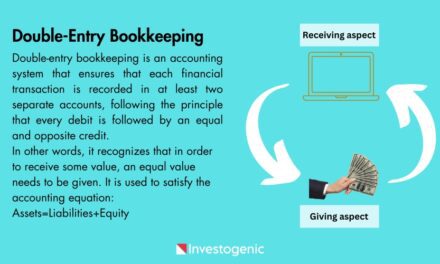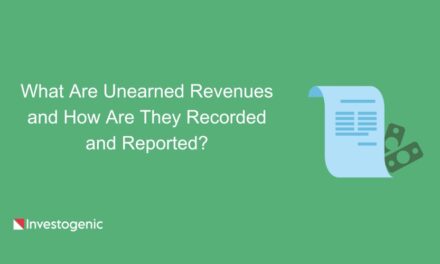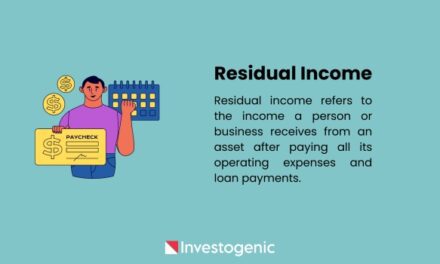
IPO: What Is It, Its Types, And How To Participate In It

What is an IPO?
An IPO, or initial public offering, is the process by which a privately owned company becomes a publicly traded company by issuing its shares to the general public for the first time. An IPO is one of the primary ways of raising capital for a company’s operations, growth, and expansion.
Types of IPOs
There are two common types of IPOs: a fixed-price offering and a book-building offering. A company can use any of these, individually or jointly, to issue an IPO.
Fixed Price Offering
Under fixed price, the company going public sets a fixed price at which its shares are offered to investors. In this way, investors know the price of the share before the company goes public. Demand from the market is known only after the issue is closed. To participate in this IPO, the investor will have to pay the full price of the shares at the time of application.
Book Building Offering
Under book building, the company going public offers investors a 20% price band on the shares. Investors place bids on the shares before the final price is decided after the bidding closes. Investors have to indicate how many shares they want to buy and how much they are willing to pay. Unlike a fixed-price offering, there is no fixed price per share.
In a book-building offering, the lowest share price is known as the floor price, while the highest share price is known as the cap price. In this case, the final share price is determined according to investor bids.
How the IPO Works
An IPO is a big step for the company to raise capital for its operations, growth, and expansion. Before an IPO, the company is owned by a relatively small number of shareholders, including early investors such as the founder, family, and friends, as well as professional investors such as venture capitalists or angel investors.
In such a situation, if a company needs funds to expand its business and a small number of shareholders are not able to invest a huge amount in the company for its expansion or development, it can raise funds through an IPO. For this, they will have to give some part of the company’s ownership to the general public in return for which the general public invests money in the company.
In fact, by investing in an IPO, the general public buys ownership equal to the capital invested in the company, in return for which the company gets so much money.
The process of issuing an IPO
It is important to note that going public is an important decision for a company, as it involves increased regulatory scrutiny, disclosure requirements, and public accountability. However, it can also provide access to a broader pool of capital, increased visibility, and potential growth opportunities. The success of an IPO depends on a variety of factors, including market conditions, investor sentiment, and the company’s financial performance and prospects.
The process of issuing an IPO is lengthy and involves various stages. These steps range from issuing a prospectus to listing on stock exchanges. These are given below:
- Preparation: Before going public, a company must prepare for the IPO process. This includes making necessary organizational and operational changes to meet the financial auditing, legal compliance, and regulatory requirements of the stock exchange where the company plans to list its shares.
- Hiring Professionals: When a company plans to go public, it usually hires a team of financial and legal professionals, including investment bankers, underwriters, lawyers, and accountants, to assist with the IPO process. These experts help guide the company through the complex regulatory and financial aspects of going public so that all the stages of the IPO are completed smoothly and without any violation of laws or rules.
- Registration and Filing: The company files the necessary paperwork with the relevant regulatory authorities, such as the Securities and Exchange Commission (SEC) in the United States, to register its securities for public offering. This includes disclosing detailed information about its financials, operations, risks, and management.
- Pricing: The underwriters determine the IPO’s offering price based on investor interest and demand. This price is crucial because it will determine the initial valuation of the company and how much capital it raises. The offering price is often slightly below the expected market price to incentivize early investors.
- Marketing & Updates: Prior to an IPO, the company and its underwriters conduct a promotion to present the company’s business and financial prospects to potential investors. Underwriters also present proposals and evaluations discussing their services, the best type of security to issue, the price to be offered, the quantity of shares, and the estimated time frame for the market offering. This helps generate interest in the IPO and attract institutional and retail investors.
- Allocation of Shares: The shares of the company are then allotted to institutional investors, such as mutual funds, pension funds, and individual investors participating in the IPO. Allocation is generally based on demand and the investor’s relationship with the underwriters.
- Trading Begins: Once the shares are allocated and the IPO date arrives, the company’s stock begins trading on the stock exchange. It becomes available for buying and selling by the general public. The stock’s price can fluctuate significantly in the initial trading days, driven by supply and demand dynamics.
- Post-IPO Reporting: After the IPO, the company must continue to comply with regulatory reporting requirements, including quarterly and annual financial statements and disclosures. This provides shareholders and the public transparency about the company’s performance and financial health.
- Liquidity and Exit: Going public provides liquidity for early investors, founders, and employees who hold shares in the company. It also allows the company to access additional capital from the public markets through secondary offerings if needed.
- Ongoing Operations: The company continues its operations as a publicly traded entity, adhering to stock exchange rules and regulations and striving to create shareholder value over the long term.
Participating in an IPO
Participating in an IPO (Initial Public Offering) allows you to buy shares of a company at its offering price when it goes public. Remember that participation in an IPO is not guaranteed, and the allocation process can be competitive. Additionally, IPO investments can carry risks, so it’s essential to do your due diligence and consider your investment goals and risk tolerance before participating in any IPO.
Here are the general steps to participate in an IPO:
- Open a Brokerage Account: To invest in an IPO, it is mandatory to have a brokerage account. You can open this account with any brokerage firm. Almost all brokerage firms provide access to IPOs.
- Funding Your Account: Make sure your brokerage account is adequately funded to cover the cost of purchasing IPO shares. IPOs typically require a minimum investment amount, which can vary depending on the IPO and the brokerage.
- Monitor Upcoming IPOs: Stay informed about upcoming IPOs by checking the news, your brokerage’s website or app, and financial news sources. Brokerages often provide information about upcoming IPOs, including the expected IPO date and the companies going public.
- Review the Prospectus: Before participating in an IPO, review the company’s prospectus. The prospectus contains important information about the company, its financials, risks, and the terms of the IPO. Understanding this information is crucial for making an informed investment decision.
- Submit an Order: When an IPO you’re interested in becomes available, you can submit an order to purchase shares. The process can vary slightly by brokerage, but typically you will need to:
- Indicate the number of shares you want to purchase.
- Confirm that you meet any eligibility criteria set by the brokerage or the issuer.
- Place your order before the IPO’s subscription or offering period ends.
- Payment: Pay for the shares as per your order. This may include transferring the required funds from your brokerage account or providing payment through some other method.
- Consider IPO Allocation:
- IPO shares are often oversubscribed, meaning there may be more demand than available shares. As a result, not everyone who places an order may receive an allocation of shares.
- Brokerages may use various methods to allocate shares, such as a lottery system, pro-rata allocation based on order size, or a combination of methods. The allocation process can vary from one IPO to another.
- Wait for Confirmation: Once the IPO allocation is determined and you’re awarded shares, you’ll receive confirmation from your brokerage. It will specify the number of shares you were allocated and the total cost.
- Trading Begins: After the IPO’s pricing and allocation process is completed, the company’s shares start trading on the stock exchange. You can check the stock’s ticker symbol and market price to see how your investment is performing.
- Manage Your Investment: After participating in the IPO and owning shares, you can decide whether to hold them for the long term or trade them in the open market. Make sure to continue monitoring the company’s performance and any developments that may affect your investment.
Advantages and Disadvantages of an IPO
Each type of IPO has its own advantages, disadvantages, and regulatory requirements, and which method to adopt depends on the company’s specific goals, financial situation, and strategic considerations.
The advantages or disadvantages of an IPO can be determined according to the profile of the company. For this, you should read and understand the company’s prospectus thoroughly.
Advantages
- The first advantage is that through an IPO, the company can raise funds directly from the public.
- An IPO allows existing shareholders, including founders, early investors, and employees, to sell their shares in the public markets, providing liquidity and potentially realizing gains on their investments.
- Going public increases the company’s visibility and credibility in the market.
- Public companies can attract a broader range of investors, including institutional investors such as mutual funds and pension funds, as well as retail investors, which can help increase demand for the company’s shares.
Disadvantages
- Going public can be expensive due to fees for legal, accounting, underwriting, and regulatory compliance.
- Public companies are subject to market volatility and shareholder scrutiny. Share prices can fluctuate significantly, and investors may have high expectations, leading to pressure to meet quarterly earnings targets.
- A company’s stock price can be influenced by factors beyond its control, such as economic conditions, industry trends, and market sentiment.
- Public companies may face increased legal and regulatory liability, including the possibility of shareholder lawsuits, if they believe a company’s management or directors have not acted in their best interests or have failed to provide transparency as required by law.


























